
For its first participation at Parcours des Mondes, Duende Art Projects is proud to present seven paintings by three acclaimed Ndebele artists. For generations Southern African Ndebele women have created an art of remarkable richness and vitality. In large murals that covered the exterior walls of their houses, they created designs that are at once ancient and modern in their minimalism, bright colors, and bold abstract patterns. These unique geometric motifs, with their schematic color arrangements in angular areas outlined in black, marked their Ndebele identity. Under the impulse of the late Belgian art dealer Alain Guisson, three artists transferred the ephemeral Ndebele mural paintings from walls to paper, thereby promoting and preserving the art form for posterity. At the time it was a new way for Ndebele women to assert their identity, each of them pursuing their own aesthetic path. Beaux Rêves – Sweet Dreams presents seven works from the artists Franzina Ndimande, her daughter Angelina Ndimande, and Anna Mahlangu, all created in 1993.
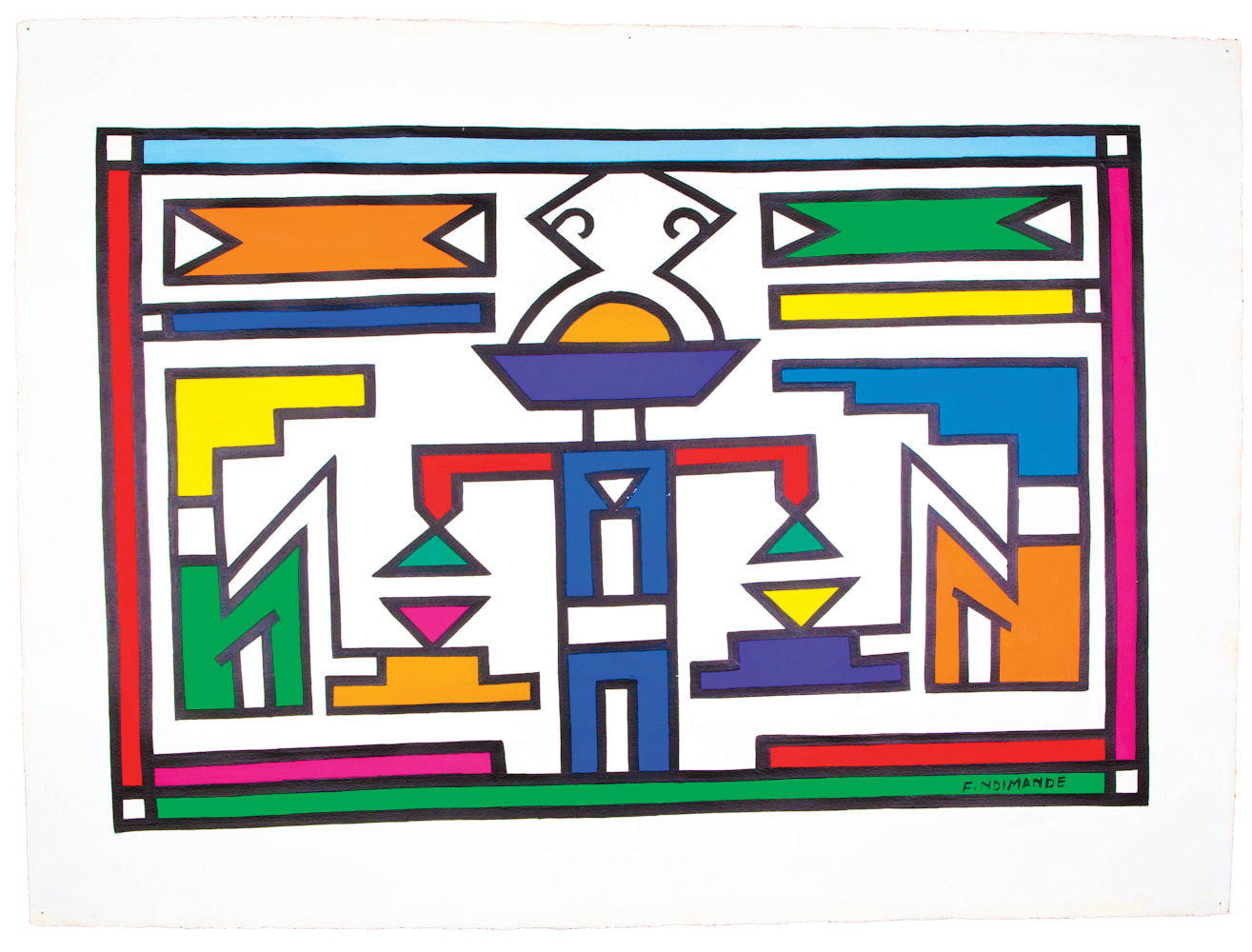
Franzina Ndimande, “Untitled” (1993), Mabhoko, South Africa. Acrylic paint on paper, 56 x 76 cm.
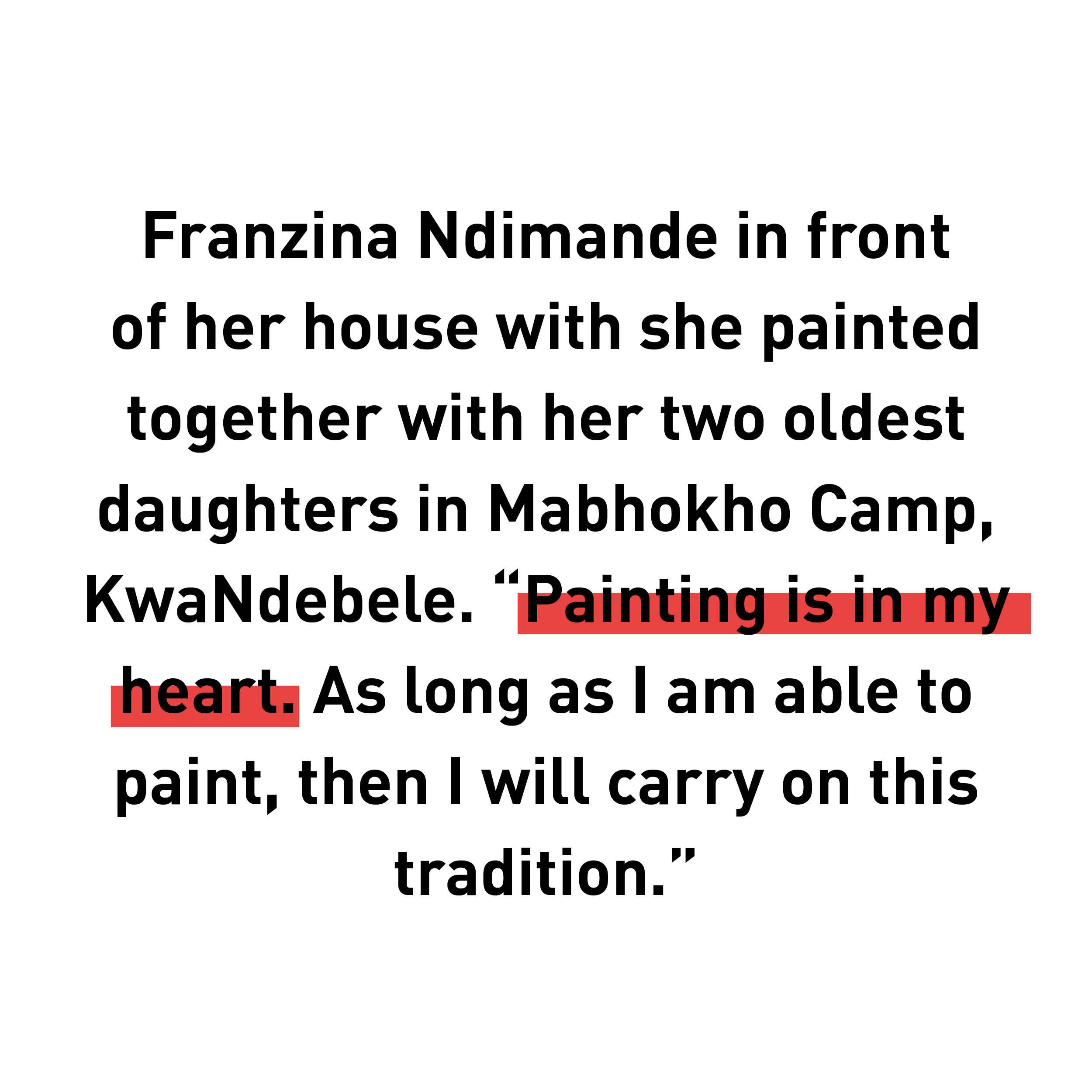
Together with the works by the internationally acclaimed artist Esther Mahlangu, the Ndebele art style has conquered the world since the early 1990s. The vividly colorful abstract designs, with their dynamic composition and color, have inspired innumerous fashion designers and other creatives. When comparing the works of Franzina Ndimande, Angelina Ndimande, and Anna Mahlangu a great deal of individual flair can be observed in the paintings. These three Ndebele artists exemplify the creative heights they can reach within the limitations of the classical Ndebele style. The traditional designs blend happily with their novel approaches and the use of a new medium, thereby creating a new chapter in Ndebele art history. The enthusiasm of Ndebele artists to start working on paper on the request of Alain Guisson illustrates their adaptability to change on the one hand and of their obstinate determination to maintain their traditions on the other, passing them on from mother to daughter.
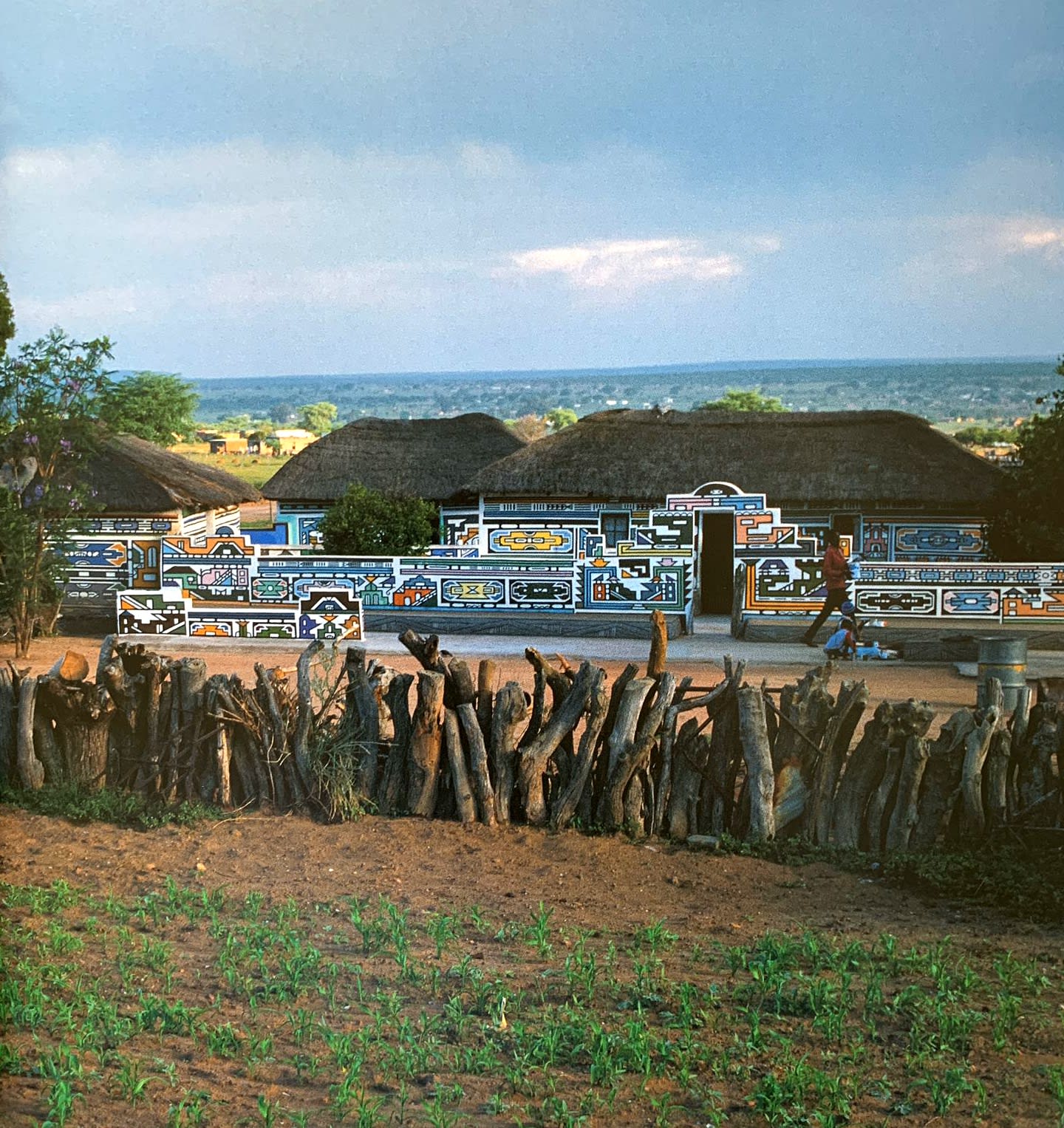
Home of Daniel and Franzina Ndimande and their thirteen children, in Mabhoko ccamp, KwaNdebele. Image courtesy of Margaret Courtney-Clark.
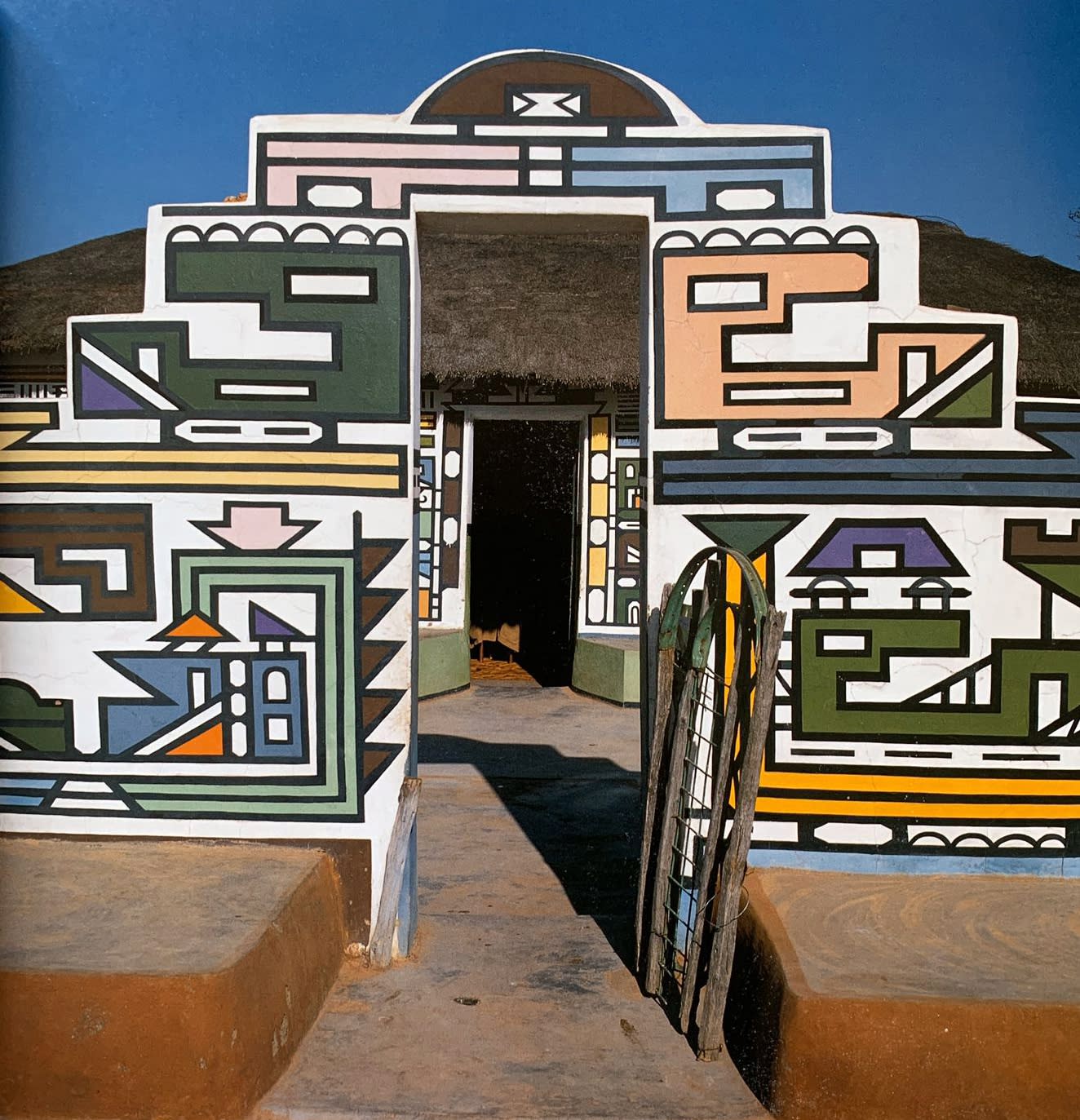
With its elaborate entrance gate and animal enclosure in the foreground, this is one of the finest examples of an Ndebele umuzi. Franzina Ndimande painted all of the buildings, assisted by her two eldest daughters. Image courtesy of Margaret Courtney-Clark.
A fundamental aspect of the design units that compose these paintings is their symmetry. Generally, there’s a bilateral equilibrium along a vertical and/or horizontal axis. Motifs can be painted both forward and backward to create a harmony within the design field. This symmetry is more apparent in form of the design unit than in the application of color. Designs in Ndebele art do not symbolize specific cosmological or religious concepts, yet are adapted from various inspirations from daily life in South Africa. While the inclination for abstraction continues, new sources of inspiration now reflect modernity. Triangles, for example, habitually refer to electric light fixtures. Originally painted on walls, it is not surprising many of the design elements are architectural in nature. Houses, windows, and stairs can be rendered in triangles and rectangles, arrows, and step patterns.
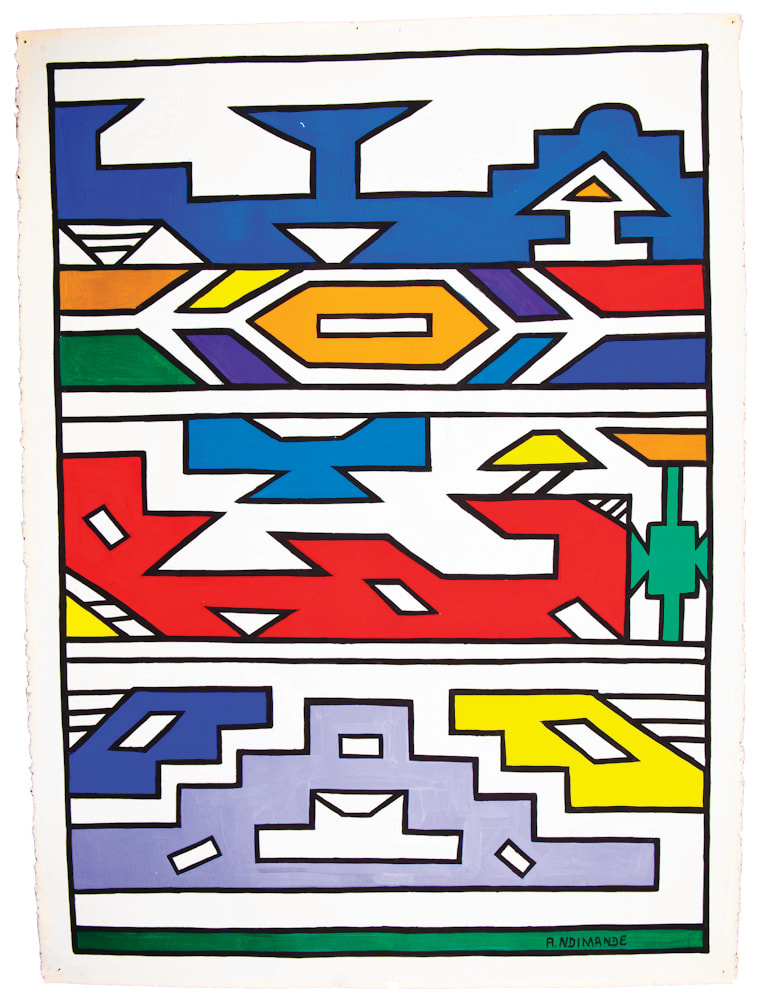
Angelina Ndimande (Mabhoko, South Africa) “Untitled” (1993). Acrylic paint on paper. 56 x 76 cm
The paintings, just as murals and beadwork, are an art developed by a minority group within a polyethnic society to establish and affirm their identity. While the colorful Ndebele wall decorations are a relatively recent tradition, beadwork traditions go much farther back. Colorful beads have been worked onto aprons in elaborate geometric designs since the 19th century. Before the murals, Ndebele women had already developed a complex visual language in their beadwork patterns, which similarly served as markers of identity. Only with the availability of acrylic paints after the Second World War and the proliferation of larger houses with rectangular ‘canvases’, a gradual elaboration of the mud-plastered walls beyond the simple outlining of doors and windows emerged. Originally only colors made from natural pigments were available, but with the emergence of trading stores brushes and acrylic paints became accessible from the mid 20th century onwards. While still inspired by age-old visual traditions, this new range of vivid colors increased the graphic effect of the large murals significantly. A remarkable aspect of Ndebele painting is the fact that it is composed freehand, without preliminary drawings or the use of any other tools except the painter’s hands, her brush, and her innovative spirit.
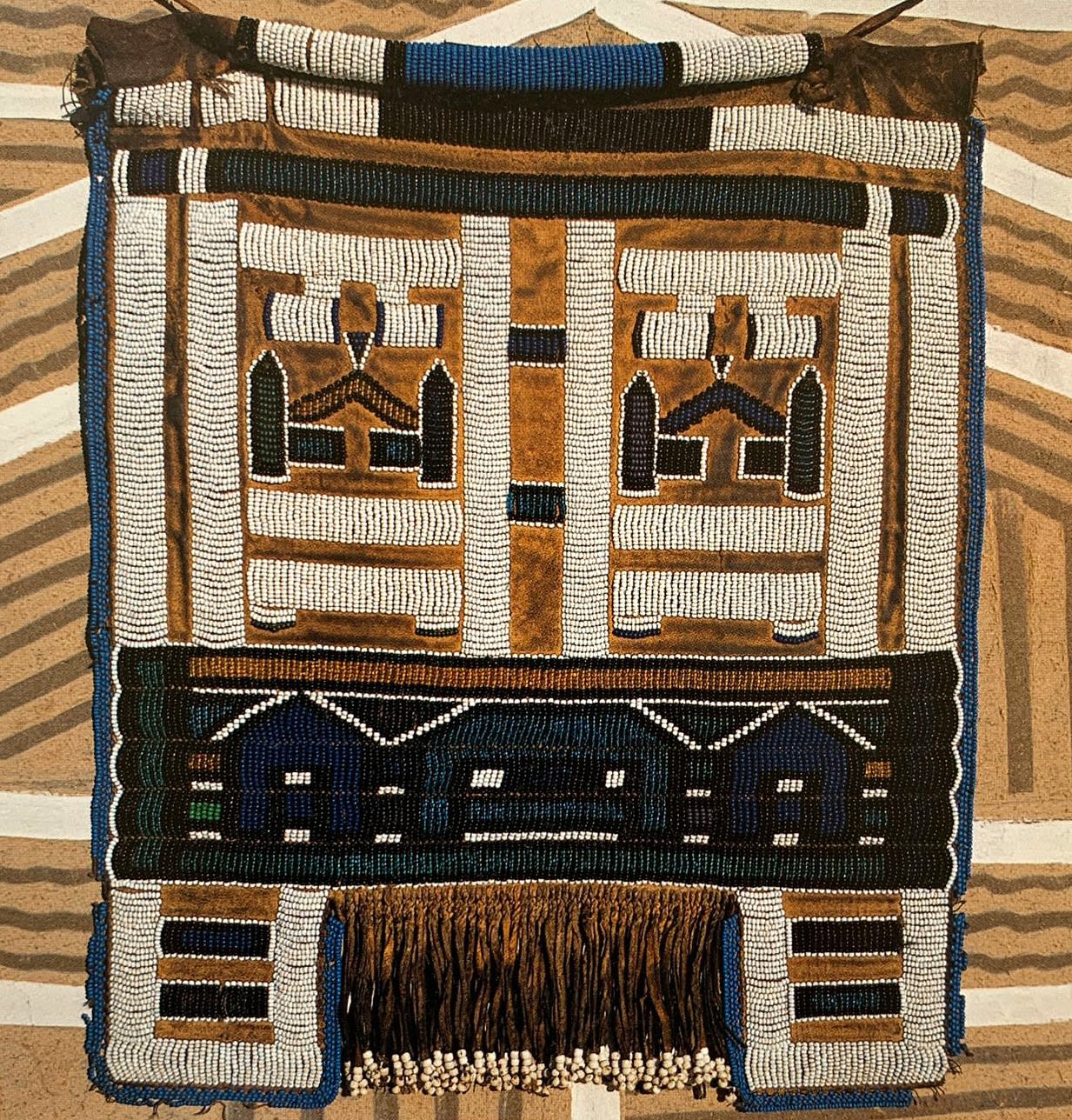
A beautiful example of an amaphotho, a beaded skirt for everyday use by married women, made by Franzina Ndimande. Image courtesy of Margaret Courtney-Clark.
One cannot talk about these paintings without mentioning Margaret Courtney-Clark. Her photographic essay on the art of the Ndebele published in 1990 showed it to be thriving with extraordinary vigor, notwithstanding the problematic socio-political circumstances the Ndebele were forced to live under during Apartheid. Courtney-Clarke’s passionate engagement with the art of the Ndebele resulted in the creation of the Cultural Centre for Women and Children, opened in September 2001 at Mabhoko, in the heart of what used to be KwaNdebele. The center and its parent body, the Ndebele Foundation, were the outcome of Courtney-Clark’s dedicated effort to involve the local community in a place that could grow and pass on the arts of Ndebele women to the next generations. The center consists of school and training workshop where the students are taught by Franzina Ndimande, one of the great exponents of Ndebele art, and her daughter Angelina – both of whom we present works of in this exhibition.
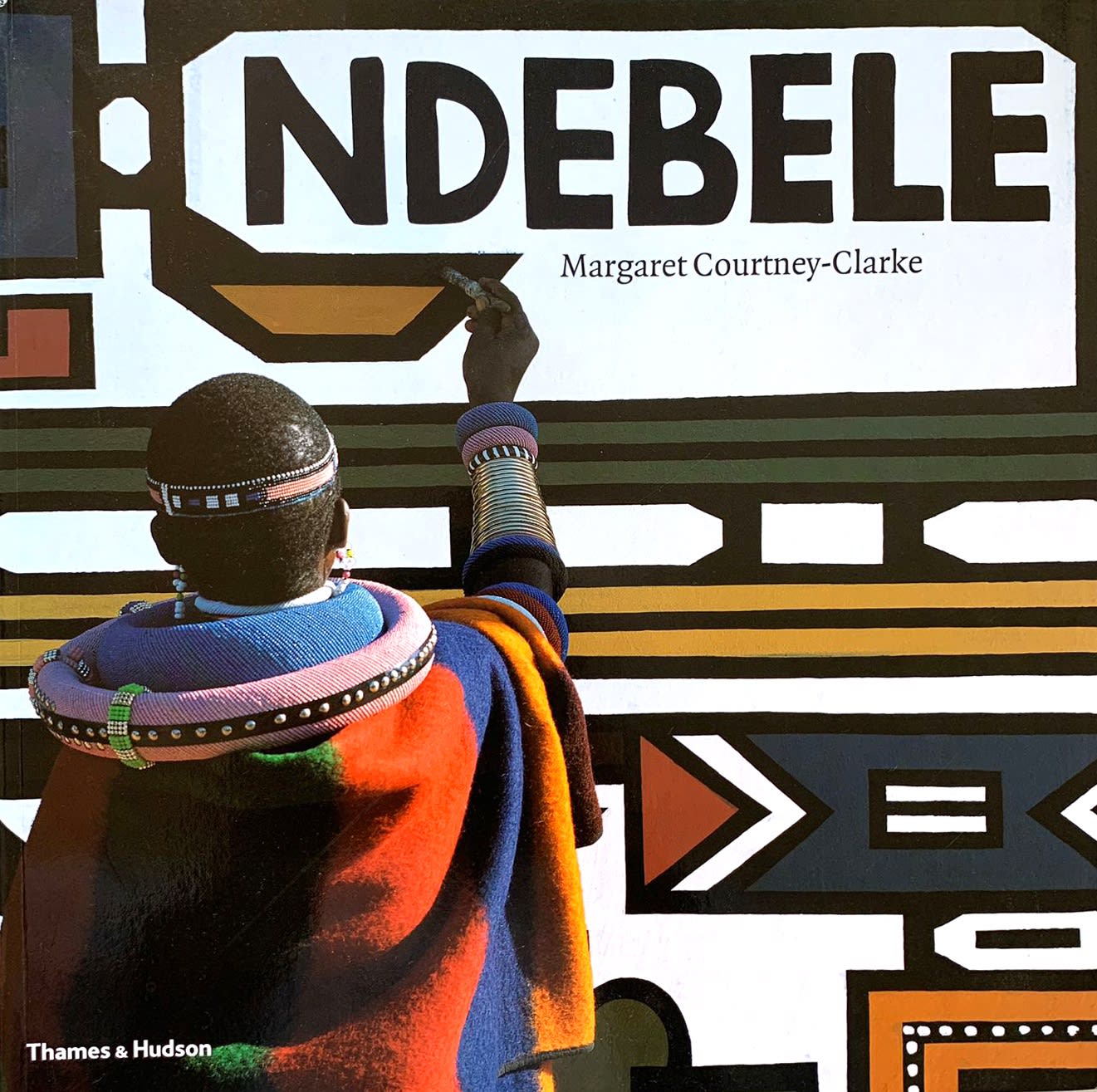
Franzina Ndimande, Mabhokho, KwaNdebele, painting a wall of her home for her son's initiation ceremony. Images courtesy of Margaret Courtney-Clark.